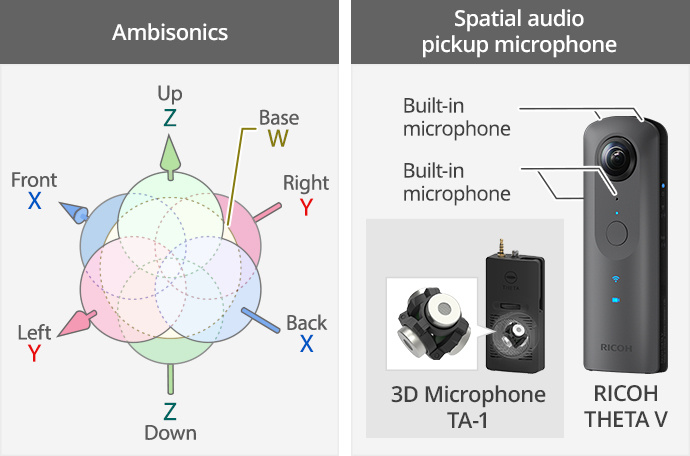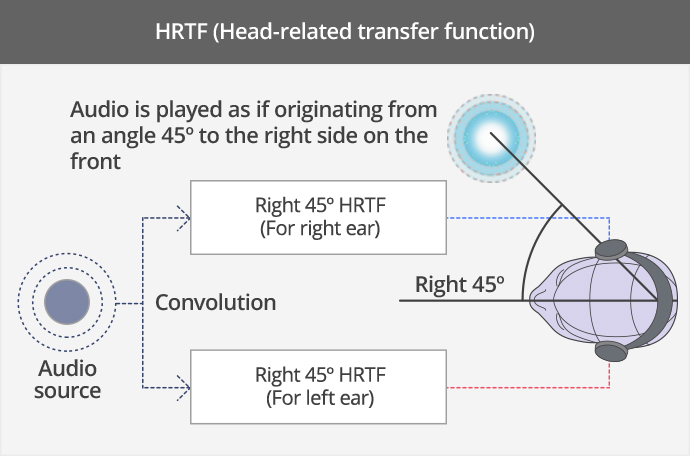Well, I carried out an experiment about audio-visual interaction using Ricoh Theta V. However, I have two questions.
1, Are the 4 built-in microphones in Theta V the 1st order ambisonic microphone? Is there anyone know their model, parameter. etc?
2, The video files I got is mp4, which is mono channel audio. After I using Ricoh Theta software on Windows, this file is converted to another mp4 file named “***_er.mp4”. This is also a mono channel audio file. After using Ricoh Theta Movie Converter, it is converted to a mov file. This time, it is a 4 channels audio file. My question is, What is that mono channel audio? One of the 4 channel signals, for example, W? Or the mix of all 4 channel? If in this case, how can it mix these 4 channels signals?
update
I found although the “**_er.mp4” is a mono audio file, it is also spatial audio when listening via Ricoh Theta software on Windows. This means this mp4 file contains spatial audio information. But when I look over the detail of this mp4 file using right-click, it is shown as mono channel. And if I play this mp4 file via other media player, Pot Player, for example, it is also mono audio. So what I heard when I play this mp4 file via Pot player? A mixture of all 4 channels? How mix?
Just update what I found.
1, These 4 built-in microphones shoule be MEMS microphones, which are very popular in smart phone. The model may be AKU2001(Akustica), or NJD3002(New Janpan Radio (NJR)). Actually ,what I want to know is the frequency response character and accuracy.
2, I have confirmed that the mono signal is the W channel signal.
I compared this mono signal in mp4 file to all of 4 channel signals in mov file, and find that this mono signal is exactly the same with one of the 4 channel signals, which is w channel, except the level is 3 dB lower.
I remenber someone here also mentioned there are indeed 3 dB level lower of W channel than the actual sound level.
So I assume that: the original video file of Ricoh Theta V contains 2 kinds of audio information, the mono channel audio signal and 4channel B-format ambisonics audio signals. When this original file is played by Ricoh Theta software, the ambisonics audio signal is read (that is why we can hear spatial audio via the Ricoh Theta software) ; while when this file is played via PC media player, Pot Player, for example, only the mono audio signal is read, maybe because the player doesn’t support spatial audio palying. This is why when I right-click the mp4 file and it expresses mono audio.

